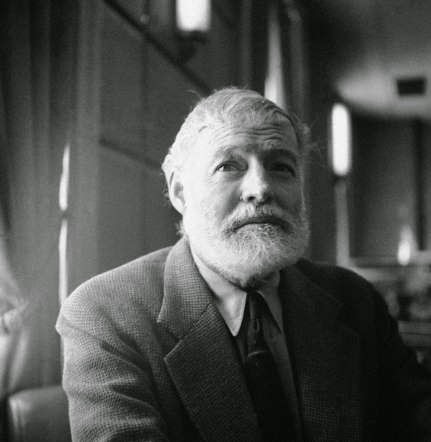Ernest Hemingway last meal New York strip steak and baked potato
Ernest Hemingway last meal New York strip steak and baked potato, Ernest Hemingway’s first novel, THE TORRENTS OF SPRING, was published in 1926. His writing career flourished into the 50’s and in 1953 he won a Pulitzer Prize for the book many critics consider his masterpiece, THE OLD MAN AND THE SEA. The following year his life’s work was recognized with the Nobel Prize for Literature. Hemingway was at the top of his game. But the 60’s were a different matter. While on safari in 1960, Hemingway was in two plane crashes that left him with a concussion and shattered vertebrae. On top of his physical injuries, Hemingway refused to acknowledge the changing literary environment. Henry Miller’s TROPIC OF CANCER was on the top of the bestseller list and the editors were often telling their up and coming writers, “We want more Kerouac and less Hemingway.” The world was changing and the iconic “Papa” no longer fit.
Hemingway began drinking more and more, and for the first time in his life he was unable to write in that condition. He confessed to his old friend and editor, A.E. Hotchner, “I’m living in a Kafka nightmare.” In the following weeks, Hemingway became more agitated. In Hemingway’s final conversation with Hotchner, he incoherently repeated over and over, “I can’t write any more. I can’t write any more. I can’t write any more…”
In the spring of 1960, Hemingway was committed to the Mayo Psychiatric Clinic in Rochester, Minnesota for severe paranoia and depression. After a year-long series of shock treatments, Hemingway had extreme memory loss and was physically incapable of writing. His wife, Mary, met with psychiatrists in an effort to have him permanently hospitalized. Her move was thwarted by his physicians who believed Hemingway would not live through another round of electric shock treatment.
On June 26, 1961, Hemingway was released from the Mayo Clinic. Mary and a friend, George Brown, drove him back to his home in Ketchum, Idaho, arriving on June 30th. The following day, in an effort to return to normalcy, Mary and Hemingway went to dinner at their favorite restaurant, the Christina. Their waitress that evening was June Maella, a 20-year-old native Idahoan who usually served the famous writer when he dined at Christina.
Hemingway ordered his usual from Maella that night – a New York strip steak, which was accompanied by a baked potato and a green salad. Hemingway always substituted a Caesar salad for the traditional green salad. Maella remembers, “He sat at table five that night. It is in the corner and overlooks the dining room and the bar. He could sit there and see everyone in the restaurant. As always, Mr. Hemingway ordered a bottle of Bordeaux wine with his meal. I remember he didn’t act any differently that night. He sat very quietly, I never knew him to be anything but a very gentle man.”
Early the next morning Hemingway arose and quietly went down the carpeted stairway to the basement. He selected a double-barreled shotgun from his collection and loaded both barrels. He returned to the front foyer of the house. In the bright light of dawn, Hemingway raised the barrel of the shotgun to his lips and pulled the trigger.
That afternoon his wife announced his passing to the press with the statement, “Mr. Hemingway has accidentally killed himself while cleaning his gun.”

0 comments:
Post a Comment